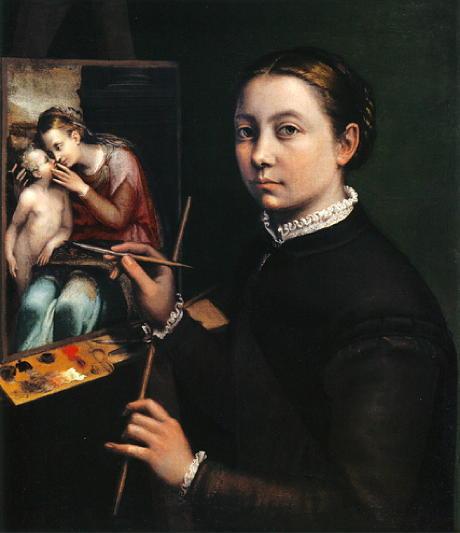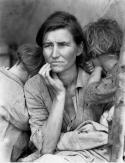Art Of The Day Weekly
#535 - from 29 November 2018 to 5 December 2018

Sofonisba Anguissola, Self-Portrait, circa 1556, castle of Lancut, Poland.
IN THE AIR
Strong women of the past
GAND – Women artists have finally found their place, and those who compete with male artists, as “market values” are no longer exceptions. In the past we had the two Louise, Bourgeois and Nevelson, today we have Julie Mehretu and Marlene Dumas. It was another story in the XVIth century, a time in which women had no means to assert themselves in the world of the arts. The performance by Artemisia Gentileschi, who succeeded in doing so, turned her into an icon, and especially after the beautiful movie by Agnès Merlet, produced on her in 1997. It is only logical that she be at the top of the billboard in this gathering of strong women, through some fifty paintings. Sofonisba Anguissola, with a slightly syrupy name one could sing, also well known, is nourished here by paintings brought in from Poland, of which a beautiful self-portrait and a scene of a chess game. But the others – in chronological order Fede Galizia, Virginia da Vezzo, Elisabetta Sirani – who love to paint mythological scenes in which women are the central figure– are still waiting for a better classification in art history.
• Les dames du baroque at the MSK, until 20 January 2019.
EXHIBITIONS

Iris van Herpen, Wilderness Embodied Courtesy Iris van Herpen. Photo Petrovsky & Ramone for Gemeentemuseum Den Haag.
Fashion by women
THE HAGUE – In a world that worships youth, eliminates wrinkles, and seeks freshness and novelty, it seems difficult to become a model at the age of 65. Yet that is the great feat Eveline Hall, a German model who started her career on the podiums at exactly that age, achieved, and she has been leading it magnificently for the last 8 years. Her face enlightens the poster of this exhibition dedicated to women in the fashion world. There have never been so many women at the head of major brands. According to the organizers this proves that gender equality is becoming a norm. As examples, we have Maria Grazia Chiuri (Dior), Sarah Burton (Alexander McQueen), Clara Waight Keller (Givenchy), Miuccia Prada or Iris van Herpen whose models are shown here. Though it was a man, Worth (1825-1895), who gave the work of seamstresses the place of honor it deserves, today’s designers have a remarkable ascendance: Chanel, Jeanne Paquin, the Callot sisters, Madeleine Vionnet, Jeanne Lanvin, Elsa Schiaparelli had already opened an impressive road.
• Femmes fatales. Strong Women in Fashion at the Gemeentemuseum, from 17 November 2018 to 24 March 2019.

Paula Rego, The Dance, 1988. Acrylic on paper, mounted on canvas - 212.6 x 274 cm © Private Collection / Bridgeman Image
Rego, from Lisbon to London
PARIS – The little girl from Lisbon, born in 1935, became a Dame of the British Empire in 2010: a remarkable journey that pays tribute to a type of figurative art with somewhat disturbing characters, a mix of Beckmann, Balthus and Garouste. Her characters are grouped together, around mysterious activities, and expressions no less mysterious. They have strong arms and legs, their faces are profoundly marked, and their bodies are completely twisted. Paula Rego built her own human comedy based on models and masks she sets up in her workshop and which she brings to life. She is not well known in France, but nevertheless a retrospective of her art is finally organized at the Orangerie.
• Les contes cruels de Paula Rego at the musée de l’Orangerie, until 14 January 2019.

Dorothea Lange, Migrant Mother, Nipomo, California, 1936© The Dorothea Lange Collection, the Oakland Museum of California, City of Oakland. Gift of Paul S. Taylor
Lange, on the side of the destitute
PARIS –The reputation of Dorothea Lange (1895-1966) rests almost exclusively on the reports she did during the Great Depression in the USA for the agencies President Roosevelt created in line with the New Deal: impoverished farmers, brave mothers, ragged malnourished children. But as this retrospective reminds the viewer, she also took photographs before that period, in particular portraits, and after, when she pursued her investigation into the ills of society, and in particular of a two, or three, or more tier justice system, or on the treatment to which the Japanese minority in the USA, suspected of complicity with the enemy, was submitted to, setting them up in detention camps.
• Dorothea Lange at the Jeu de Paume, until 27 January 2019.
BOOKS
Avant-garde Poland
Wladyslaw Strzeminski was born in Minsk in 1893, Katarzyna Kobro was born in Moscow in 1898; But they developed the greater part of their careers in Poland, first in the avant-guard groups of the 20’s, then in the most progressive art schools, in particular in Lodz. Their last decade was the most terrifying, as they underwent the German invasion, and then, after the war, the hostility of the Polish authorities for being formalist artists, lost in abstraction instead of celebrating socialist realism. They separated, saw their works discarded, and died, respectively of cancer and tuberculosis in less than a year (1951-52). The two artists, two great figures of Polish art of XXth century, deserve this final recognition. The catalogue that accompanies an exhibition at the Centre Pompidou, puts in parallel Strzeminski’s flat work and Kobro’s volumes, very geometric in the beginning and then evolving with the bronze nudes towards a type of figurative - almost classical - form of art.
• Katarzyna Kobro, Wladyslaw Strzeminski, une avant-garde polonaise, Skira/Centre Pompidou, 2018, 200 p., €35


